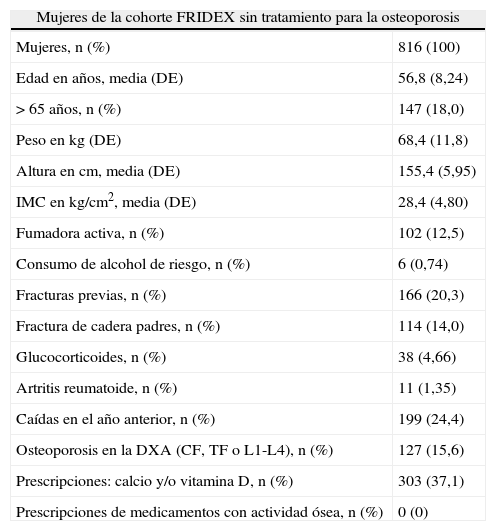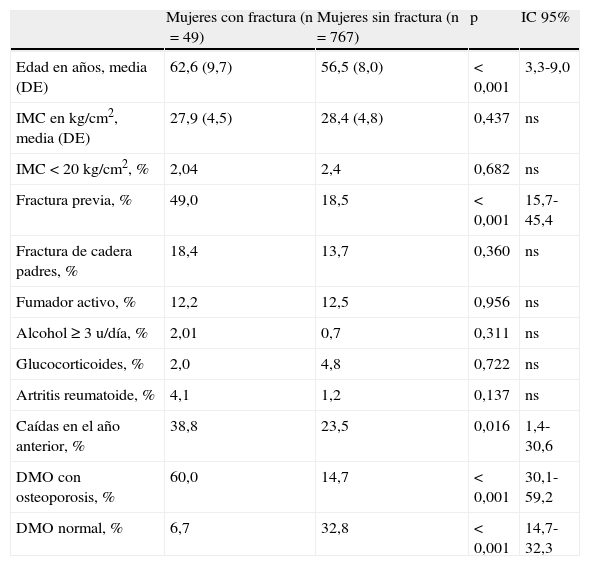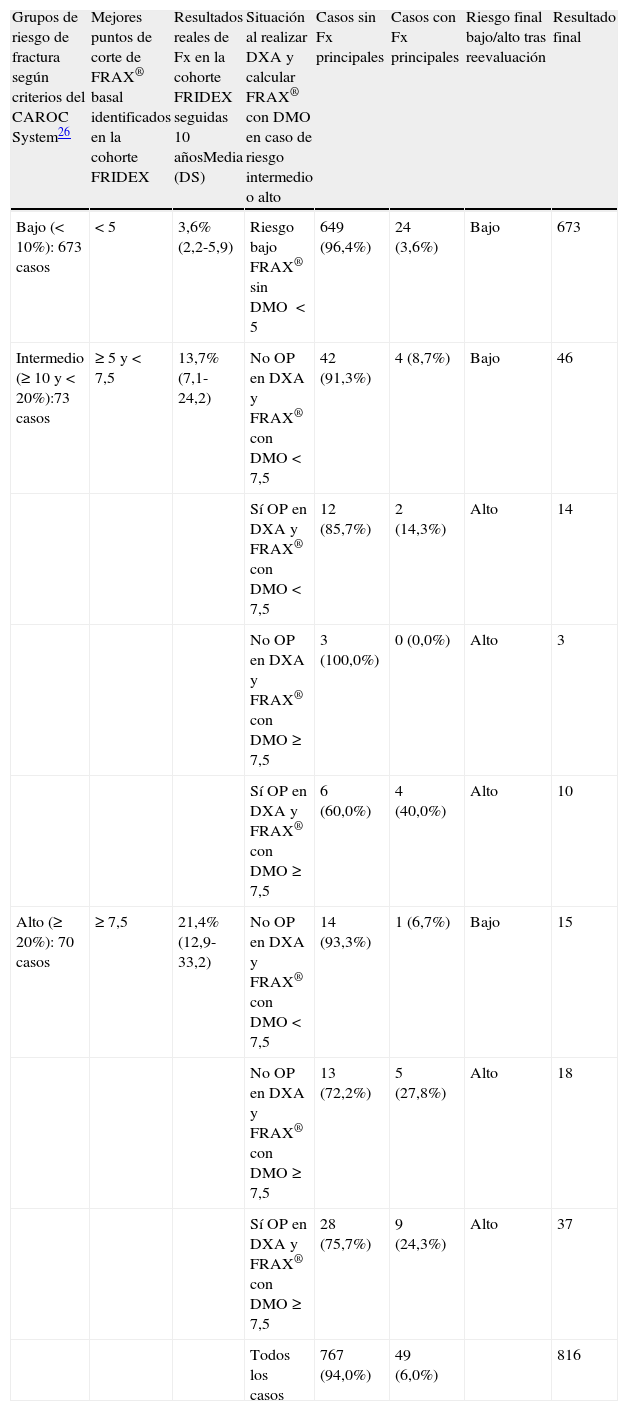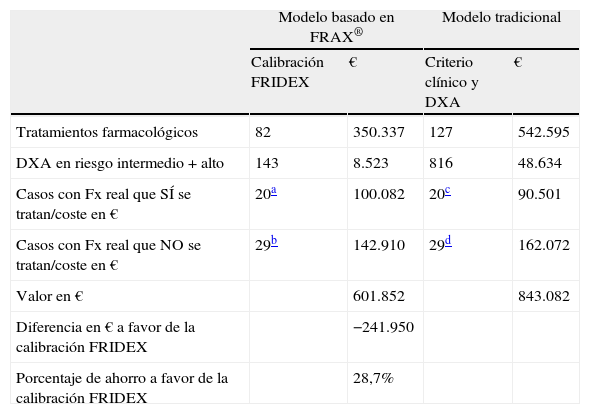Detectar los umbrales de la herramienta FRAX® que determinen los grupos de riesgo alto/bajo de fractura osteoporótica en la población femenina española y su valoración coste-efectiva.
Pacientes y métodosEstudio de cohortes. Ochocientas dieciséis mujeres de 40-90 años de la cohorte FRIDEX con densitometría basal, factores de riesgo de fractura y sin tratamiento para la osteoporosis en los 10 años de seguimiento. Se estratificaron en 3 grupos/niveles de riesgo de fractura principal (bajo<10%, intermedio 10-20% y alto>20%) según la incidencia real de fractura, y se buscaron los puntos de corte equivalentes de FRAX® basal.
ResultadosLos umbrales de FRAX® basal para fractura principal fueron: riesgo bajo<5; intermedio≥5 y <7,5 y alto≥7,5. La incidencia real de fractura con estos valores fue: riesgo bajo (3,6%; IC 95% 2,2-5,9); intermedio (13,7%; IC 95%7,1-24,2), y alto (21,4%; IC 95% 12,9-33,2). La opción más coste-efectiva fue realizar una dual energy X-ray absorptiometry (DXA, «absorciometría dual de rayos X») para FRAX®≥5 (riesgo intermedio y alto) para reclasificar los casos mediante FRAX® con DXA en riesgo alto/bajo. Así se seleccionarían 17,5% de las mujeres para DXA y 10% para tratamiento. Con estos umbrales calibrados de FRAX®, comparados con la estrategia tradicional basada en la DXA, se mejoran los parámetros predictivos y se reducen las DXA (82,5%), los tratamientos (35,4%) y el coste global (28,7%) para detectar al mismo número de mujeres que tuvieron fracturas.
ConclusionesLa utilización de los umbrales de FRAX® identificados como alto/bajo riesgo de fractura osteoporótica en la presente calibración (modelo FRIDEX) mejorarían los parámetros predictivos en mujeres españolas y de una forma más coste-efectiva que el modelo tradicional basado en el T-score ≤ -2,5 de la DXA.
To detect FRAX® threshold levels that identify groups of the population that are at high/low risk of osteoporotic fracture in the Spanish female population using a cost-effective assessment.
Patients and methodsThis is a cohort study. Eight hundred and sixteen women 40-90 years old selected from the FRIDEX cohort with densitometry and risk factors for fracture at baseline who received no treatment for osteoporosis during the 10 year follow-up period and were stratified into 3 groups/levels of fracture risk (low<10%, 10-20% intermediate and high>20%) according to the real fracture incidence.
ResultsThe thresholds of FRAX® baseline for major osteoporotic fracture were: low risk<5; intermediate≥5 to <7.5 and high≥7.5. The incidence of fracture with these values was: low risk (3.6%; 95% CI 2.2-5.9), intermediate risk (13.7%; 95% CI 7.1-24.2) and high risk (21.4%; 95% CI12.9-33.2). The most cost-effective option was to refer to dual energy X-ray absorptiometry (DXA-scan) for FRAX®≥5 (Intermediate and high risk) to reclassify by FRAX® with DXA-scan at high/low risk. These thresholds select 17.5% of women for DXA-scan and 10% for treatment. With these thresholds of FRAX®, compared with the strategy of opportunistic case finding isolated risk factors, would improve the predictive parameters and reduce 82.5% the DXA-scan, 35.4% osteoporosis prescriptions and 28.7% cost to detect the same number of women who suffer fractures.
ConclusionsThe use of FRAX ® thresholds identified as high/low risk of osteoporotic fracture in this calibration (FRIDEX model) improve predictive parameters in Spanish women and in a more cost-effective than the traditional model based on the T-score ≤ -2.5 of DXA scan.
Artículo
Comprando el artículo el PDF del mismo podrá ser descargado
Precio 19,34 €
Comprar ahora












